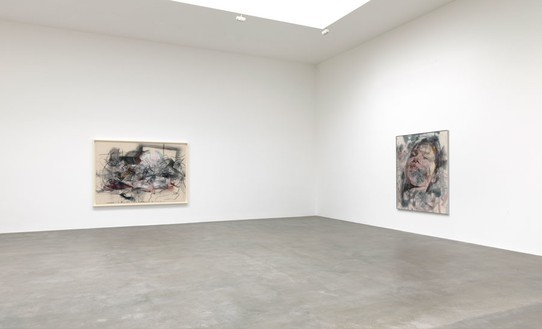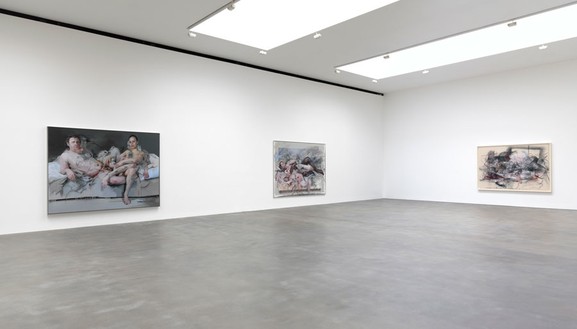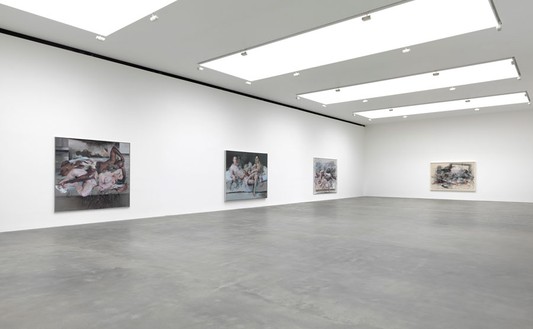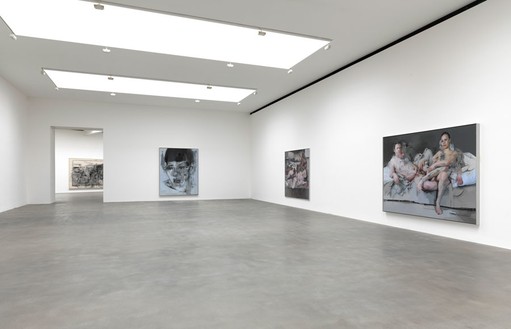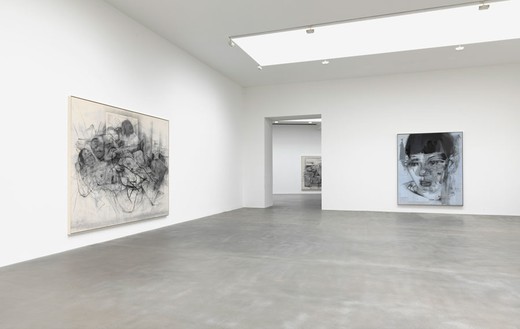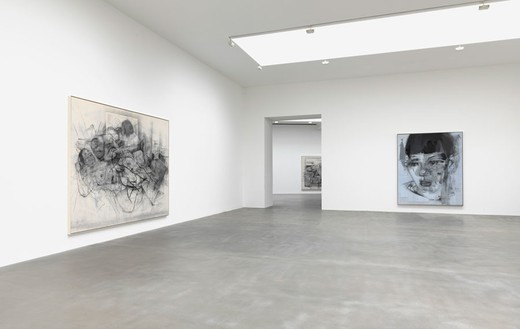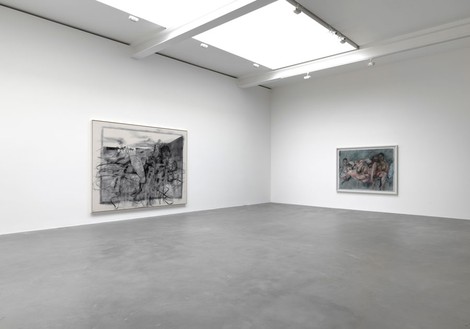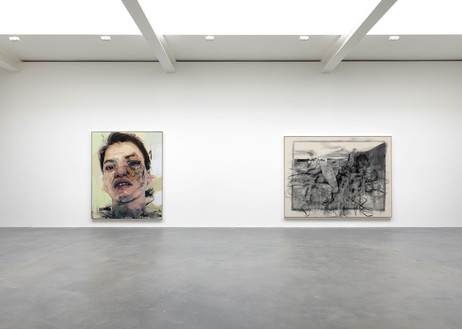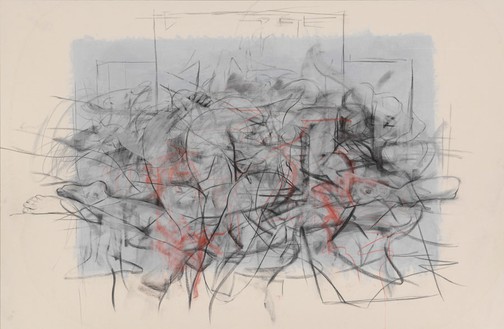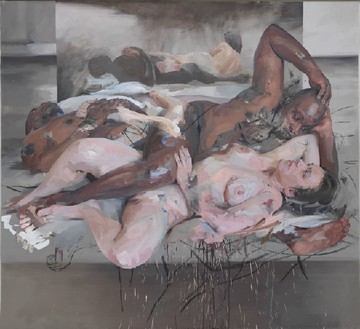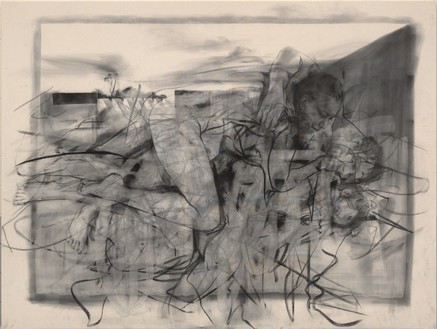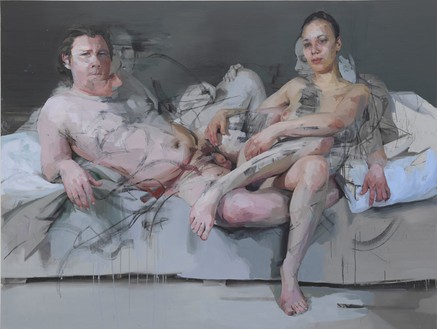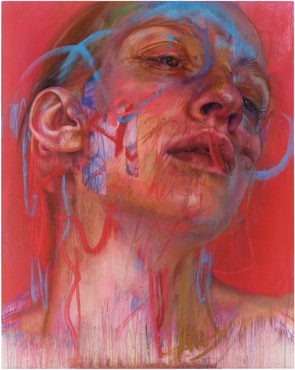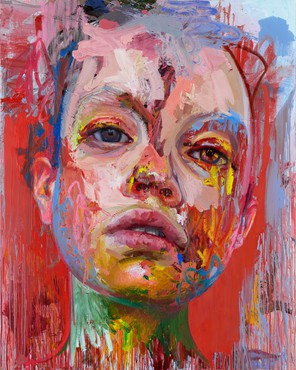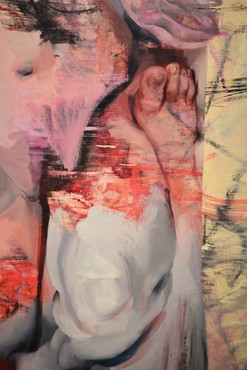About
Gagosian is pleased to present the first-ever solo exhibition of Jenny Saville’s paintings in London.
Captivated by the endless aesthetic and formal possibilities of the materiality of the human body, Saville makes a highly sensuous and tactile impression of surface and mass in her monumental oil paintings. Subjects are imbued with a sculptural yet elusive dimensionality that verges on the abstract. In recent paintings, she renews her enduring figurative investigations by depicting bodies embracing and intertwined.
Several new works are inspired by the ancient Egyptian rubbish dump at Oxyrhynchus, one of the most important archeological sites ever discovered. Heaps of discarded documents and literature, incredibly preserved in the area’s dry climate, are now invaluable; fragments of ancient Greek texts such as Euclid’s Elements and the poems of Sappho are among the excavated papyri. Saville alludes to this history through a deep layering of paired subjects: faces, torsos, and limbs overlap with shadows and reflections, palimpsests of living bodies and ancestral apparitions. Silhouettes drawn in charcoal through the surfaces of oil paint underscore the motion of the central embracing figures, while evoking the timeless human process of sketching. These intermediate “studies” echo the shifting status of the unearthed papers—once discarded, now treasured.
Time is further compressed by Saville’s adaptation of various historical approaches to portraiture, including de Kooning’s fluid abstractions of the female figure, the almost combined couples of Picasso’s late paintings and Japanese shunga prints, and Titian’s placement of subjects within dramatic perspectival landscapes, exemplified by Nymph and Shepherd (c. 1570–75). Saville’s own figures merge ethereally with settings that have been loosely appropriated from photographs and evoke the backdrops of Renaissance paintings.
Share
Artist
Download
In Conversation
Jenny Saville and Martin Gayford
Gagosian hosted a conversation between Jenny Saville and Martin Gayford, art critic and author, in conjunction with the exhibition Friends and Relations: Lucian Freud, Francis Bacon, Frank Auerbach, Michael Andrews at Gagosian, Grosvenor Hill, London. Gayford also spoke with the artist about her works in the exhibition Jenny Saville: Latent at Gagosian, rue de Castiglione, Paris.
Jenny Saville: Latent
In this video, Jenny Saville describes the evolution of her practice inside her latest exhibition, Latent, at Gagosian, Paris. She addresses the genesis of the title and reflects on the anatomy of a painting.

Jenny Saville: A cyclical rhythm of emergent forms
An exhibition curated by Sergio Risaliti, director of the Museo Novecento, Florence, pairs artworks by Jenny Saville with artists of the Italian Renaissance. On view across that city at the Museo Novecento, the Museo di Palazzo Vecchio, the Museo dell’Opera del Duomo, the Museo degli Innocenti, and the Museo di Casa Buonarroti through February 20, 2022, the presentation features paintings and drawings by Saville from the 1990s through to work made especially for the occasion. Here, Risaliti reflects on the resonances and reverberations brought about by these pairings.

Jenny Saville: Painting the Self
Jenny Saville speaks with Nicholas Cullinan, the director of the National Portrait Gallery, London, about her latest self-portrait, her studio practice, and the historical painters to whom she continually returns.
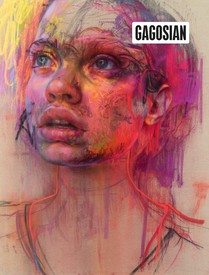
Now available
Gagosian Quarterly Winter 2020
The Winter 2020 issue of Gagosian Quarterly is now available, featuring Jenny Saville’s Prism (2020) on its cover.
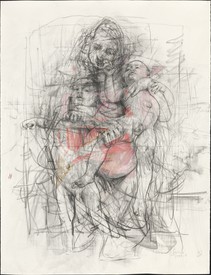
Shortlist
Five Preoccupations: Jenny Saville
Jenny Saville shares a selection of the books, films, and more that have been her companions in the quiet of the shutdowns in recent months and as she looks ahead to a new exhibition next year.
News
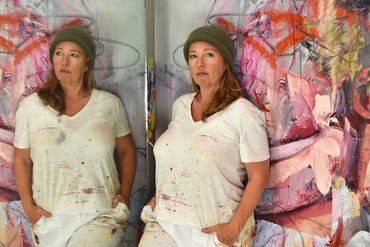
Artist Spotlight
Jenny Saville
July 22–28, 2020
In her depictions of the human form, Jenny Saville transcends the boundaries of both classical figuration and modern abstraction. Oil paint, applied in heavy layers, becomes as visceral as flesh itself, each painted mark maintaining a supple, mobile life of its own. As Saville pushes, smears, and scrapes the pigment over her large-scale canvases, the distinctions between living, breathing bodies and their painted representations begin to collapse.
Photo: courtesy the artist
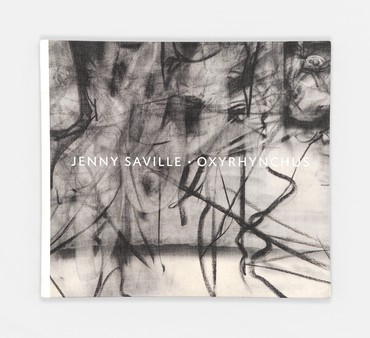
Online Reading
Jenny Saville
Oxyrhynchus
Jenny Saville: Oxyrhynchus is available for online reading from July 22 through August 21 as part of Artist Spotlight: Jenny Saville. This publication features more than a dozen works from 2006 to 2014 in which the artist references the layer upon layer of discoveries at Oxyrhynchus, a city in upper Egypt that was established in 332 bce and is considered one of the world’s most important archaeological sites. The final effect is a mysterious narrative of layered bodies and images, conveyed in a combination of oil, charcoal, and pastel. An essay by art historian John Elderfield, built around the observations of multiple past voices and the artist herself, captures the temporal culture of visual art to which the Oxyrhynchus canvases belong.
Jenny Saville: Oxyrhynchus (London: Gagosian, 2015)


